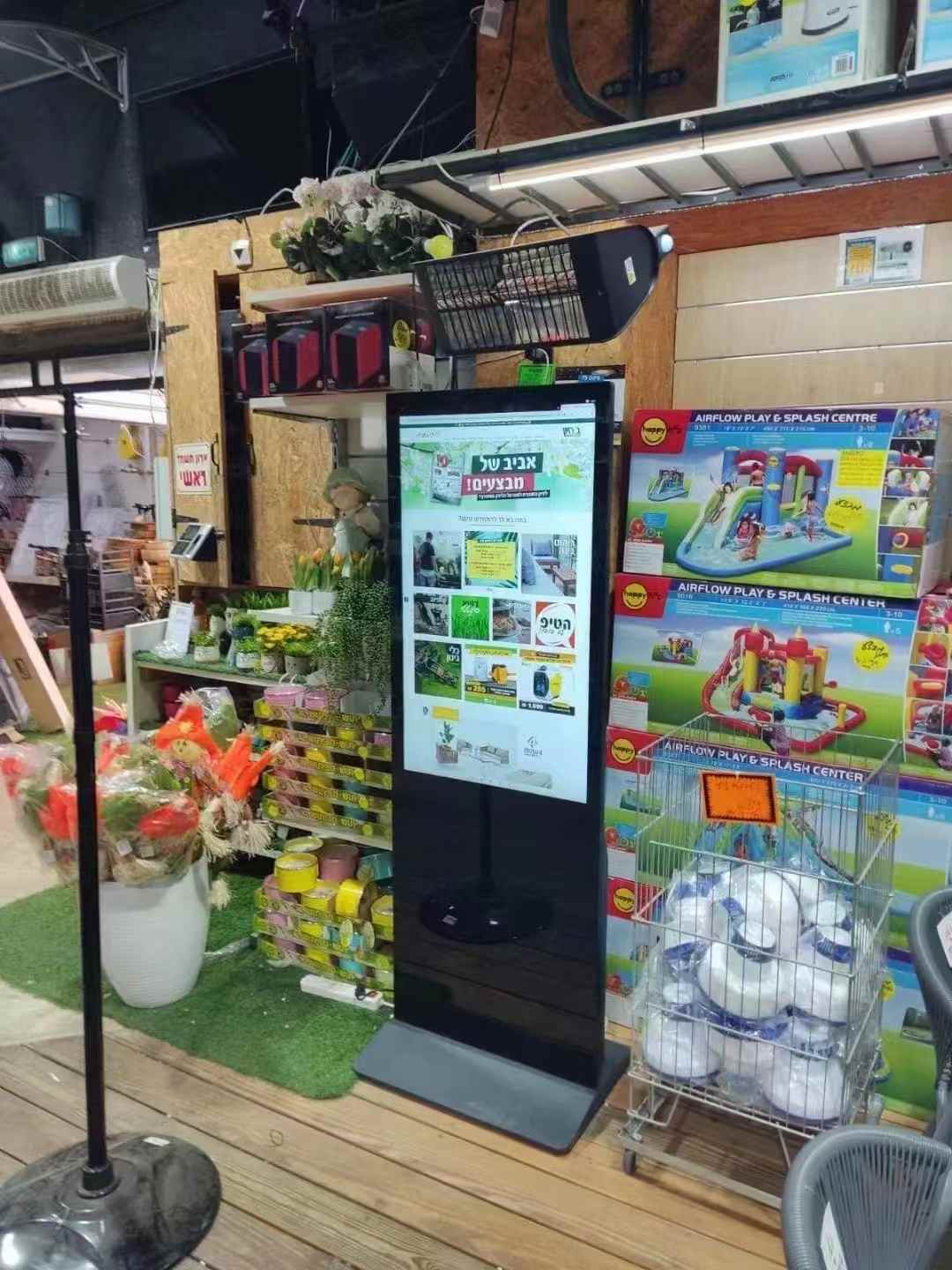Standing Digital Signage: A Comprehensive Case Study Analysis
Standing digital signage, commonly referred to as "standing digital advertising displays" or "floor-standing digital kiosks," has revolutionized the advertising and information dissemination landscape across multiple industries. These vertical, self-contained digital display units typically range from 32 to 85 inches in height and are designed for high-traffic areas where they can capture maximum audience attention.
The global digital signage market was valued at $20.8 billion in 2021 and is projected to reach $31.71 billion by 2026, with standing digital displays representing one of the fastest-growing segments. This growth is driven by technological advancements, decreasing hardware costs, and the proven effectiveness of digital signage in influencing consumer behavior.
Technical Specifications and Components
Modern standing digital signage systems consist of several key components:
1. Display Panel: Typically an LCD or LED screen with brightness levels between 500-2500 nits for visibility in various lighting conditions
2. Media Player: Embedded or external computer system for content management
3. Enclosure: Durable casing with options for weatherproofing, anti-vandal features, and temperature control
4. Mounting System: Stable base or floor stand designed for security and easy maintenance
5. Interactive Features (optional): Touch screens, gesture control, or QR code integration
6. Connectivity: Wi-Fi, Ethernet, or cellular connectivity for remote content updates
7. Sensors: Motion detectors, cameras, or people counters for analytics
Advanced models may incorporate AI-powered facial recognition for demographic analysis, real-time data integration, or augmented reality features. The typical lifespan of a commercial-grade standing digital signage unit is 5-7 years with proper maintenance.
Emerging Trends in Standing Digital Signage
The standing digital signage market continues to evolve with several notable trends:
1. Sustainability: Energy-efficient displays using solar power or low-power modes
2. Modular Design: Components that can be upgraded individually
3. Hyper-local Content: Geo-targeted messaging based on unit location
4. Predictive Analytics: AI-driven content optimization
5. Transparent Displays: See-through screens for retail applications
6. Hygienic Interfaces: Antimicrobial coatings and touchless interaction
The integration of 5G connectivity is enabling more sophisticated real-time data applications, while edge computing allows for faster processing of interactive elements directly at the display unit.
Best Practices for Standing Digital Signage Implementation
Conclusion
The case studies presented demonstrate the versatility and effectiveness of standing digital signage across diverse applications. From retail to transportation to food service, these vertical digital displays have proven their ability to enhance customer experiences, streamline operations, and drive business results.
Key success factors include thoughtful placement, data-driven content strategies, and seamless integration with other customer touchpoints. As technology continues to evolve, organizations that strategically implement standing digital signage will gain competitive advantages in customer engagement and operational efficiency.
For businesses considering standing digital signage, the evidence suggests that when properly planned and executed, these solutions can deliver substantial returns while future-proofing their physical space communications. The vertical format's unique combination of visibility, interactivity, and flexibility makes it particularly suited for the dynamic demands of modern customer environments.

